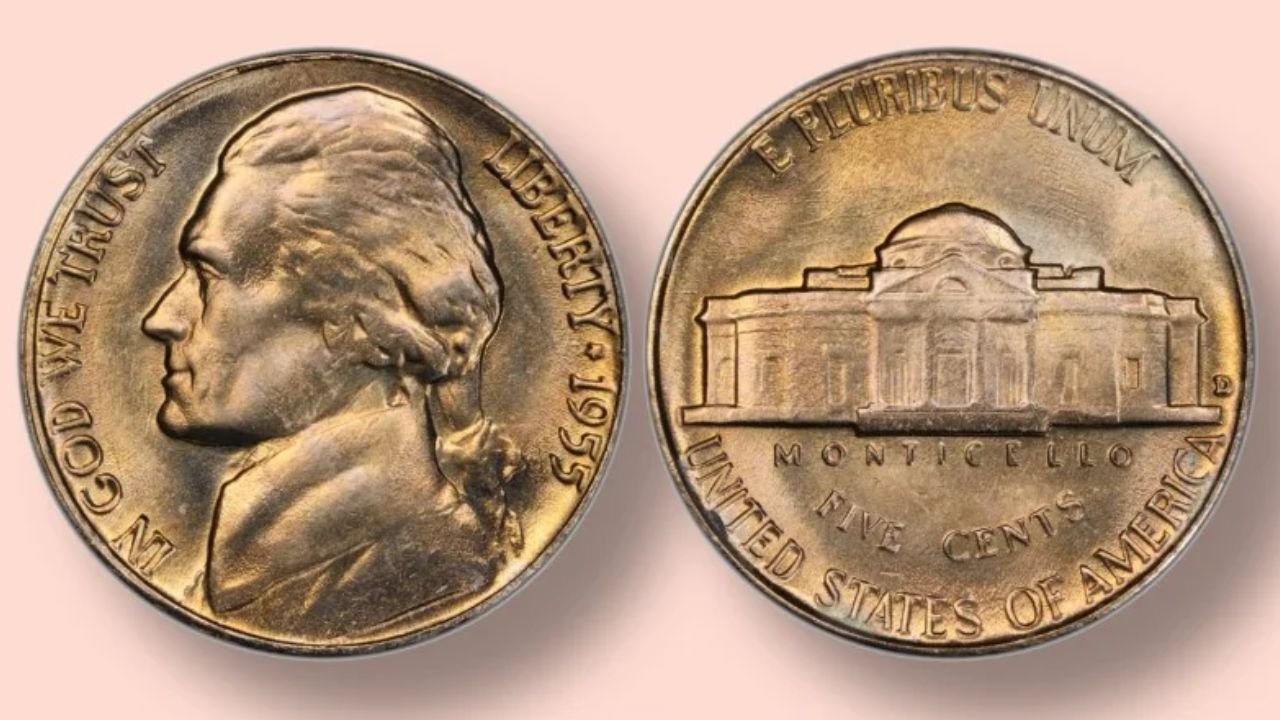Jefferson Nickel Errors: Jefferson Nickels have been a staple of American coinage since their introduction in 1938. While most are common, some contain rare errors or unusual varieties that make them highly valuable to collectors. From doubled dies to overstruck mintmarks, these coins can be worth far more than five cents—sometimes even thousands of dollars. If you enjoy searching through pocket change or inherited coin collections, keep an eye out for these 13 rare Jefferson Nickel errors and varieties.
1. 1939 Doubled Monticello and Five Cents – A Dramatic Doubled Die Error
One of the most famous Jefferson Nickel errors is the 1939 Doubled Monticello and Five Cents. This coin features a prominent doubling effect on the reverse, particularly visible in the words “Monticello” and “Five Cents.” The doubling was caused by a misaligned die during minting. High-grade examples of this error can sell for hundreds to thousands of dollars, depending on condition. If you find one in circulation, it could be a small fortune in your pocket!
2. 1942-D Over Horizontal D – A Rare Mintmark Mistake
The 1942-D Jefferson Nickel is already a key date, but an even rarer variety exists—the Over Horizontal D error. This occurs when the “D” mintmark was punched over an earlier, horizontally placed “D.” Only a few of these coins are known to exist, making them extremely valuable. In top condition, they can sell for several thousand dollars, making this one of the most sought-after Jefferson Nickel errors.
3. 1943-P Doubled Eye War Nickel – A Striking Silver Error
During World War II, Jefferson Nickels were made with 35% silver to conserve nickel for military use. Among these “War Nickels,” the 1943-P Doubled Eye variety stands out. This error shows a doubled effect on Jefferson’s eye, caused by a misaligned die. Because War Nickels are already collectible, this variety can fetch a significant premium, especially in higher grades.
4. 1949-D Over S Mintmark – A Transitional Rarity
The 1949-D Over S Jefferson Nickel is a fascinating error where the Denver “D” mintmark was stamped over a San Francisco “S.” This mistake happened when a die meant for San Francisco coins was repurposed for Denver. These nickels are rare and valuable, often selling for hundreds to thousands of dollars in uncirculated condition.
5. 1954-S/D Mintmark Overstrike – A Hidden Treasure
Similar to the 1949-D Over S, the 1954-S/D features an “S” mintmark struck over a “D.” This error is subtle and often requires magnification to confirm. Because of its scarcity, collectors prize this variety, with well-preserved examples selling for premium prices.
6. 1955-D Over S Mintmark – Another Mintmark Mix-Up
Another rare overstrike error is the 1955-D Over S, where the Denver “D” was punched over a San Francisco “S.” This variety is extremely scarce, and high-grade specimens can command thousands of dollars at auction.
7. 1971 No-S Proof Jefferson Nickel – The Ultimate Proof Rarity
Proof coins are specially made for collectors, but the 1971 No-S Proof Jefferson Nickel is missing its “S” mintmark—an incredibly rare mistake. Fewer than 10 examples are confirmed to exist, making this one of the most valuable Jefferson Nickel errors. Some have sold for over $20,000!
8. 1943/2-P Overdate War Nickel – A Historical Mistake
The 1943/2-P Overdate is a fascinating error where the “3” in the date was stamped over a “2.” This happened because the die wasn’t fully updated from the previous year. This variety is highly collectible, especially among War Nickel enthusiasts, and can be worth hundreds to thousands depending on condition.
9. 1981-S Type 2 Clear S Proof – A Mintmark Revision
In 1981, the U.S. Mint adjusted the “S” mintmark on proof coins to make it clearer. The Type 2 Clear S variety is rarer and more desirable than the original Type 1. Collectors seek this variety, and high-grade examples can sell for a premium.
10. 1938 Doubled Monticello – The First-Year Error
The 1938 Jefferson Nickel was the first of its kind, and some exhibit a doubled die error on “Monticello.” While not as dramatic as the 1939 doubling, this variety is still valuable, especially in higher grades.
11. 1964-D Repunched Mintmark – A Subtle but Valuable Flaw
The 1964-D Jefferson Nickel sometimes features a repunched “D” mintmark, where the mark was struck twice. This variety is popular with error collectors and can add significant value to an otherwise common nickel.
12. 1953-S Large S Mintmark – A Distinctive Variety
Some 1953-S Jefferson Nickels have a larger-than-normal “S” mintmark. While not an error, this variety is sought after by specialists. High-grade examples can sell for a premium over standard 1953-S nickels.
13. 2005-D Speared Bison – A Modern Error with Character
The 2005-D Jefferson Nickel (part of the Westward Journey series) features a bison design. Some coins have a die crack that looks like a spear piercing the bison, creating a unique and collectible error. While not as valuable as older errors, this variety is still a fun find for modern coin collectors.
FAQ: Jefferson Nickel Errors & Values
What makes Jefferson Nickel errors valuable?
Errors like doubled dies, overstruck mintmarks, and missing mintmarks are rare and highly sought after by collectors.
Which Jefferson Nickel error is the most valuable?
The 1971 No-S Proof Jefferson Nickel is one of the rarest, with some selling for over $20,000.
How can I check for errors?
Use a magnifying glass to inspect mintmarks, dates, and design details. Look for doubling, overstrikes, or unusual markings.
Where can I sell rare Jefferson Nickels?
Reputable coin dealers, auctions (like Heritage Auctions), and online marketplaces (eBay, Reddit’s r/Coins4Sale) are great places to sell.
Final Thoughts: Could You Have a Rare Nickel?
Rare Jefferson Nickels can turn up in pocket change, old collections, or estate sales. If you find one, it could be worth far more than five cents—so keep hunting! Would you like help identifying a potential error coin? Let us know in the comments!
